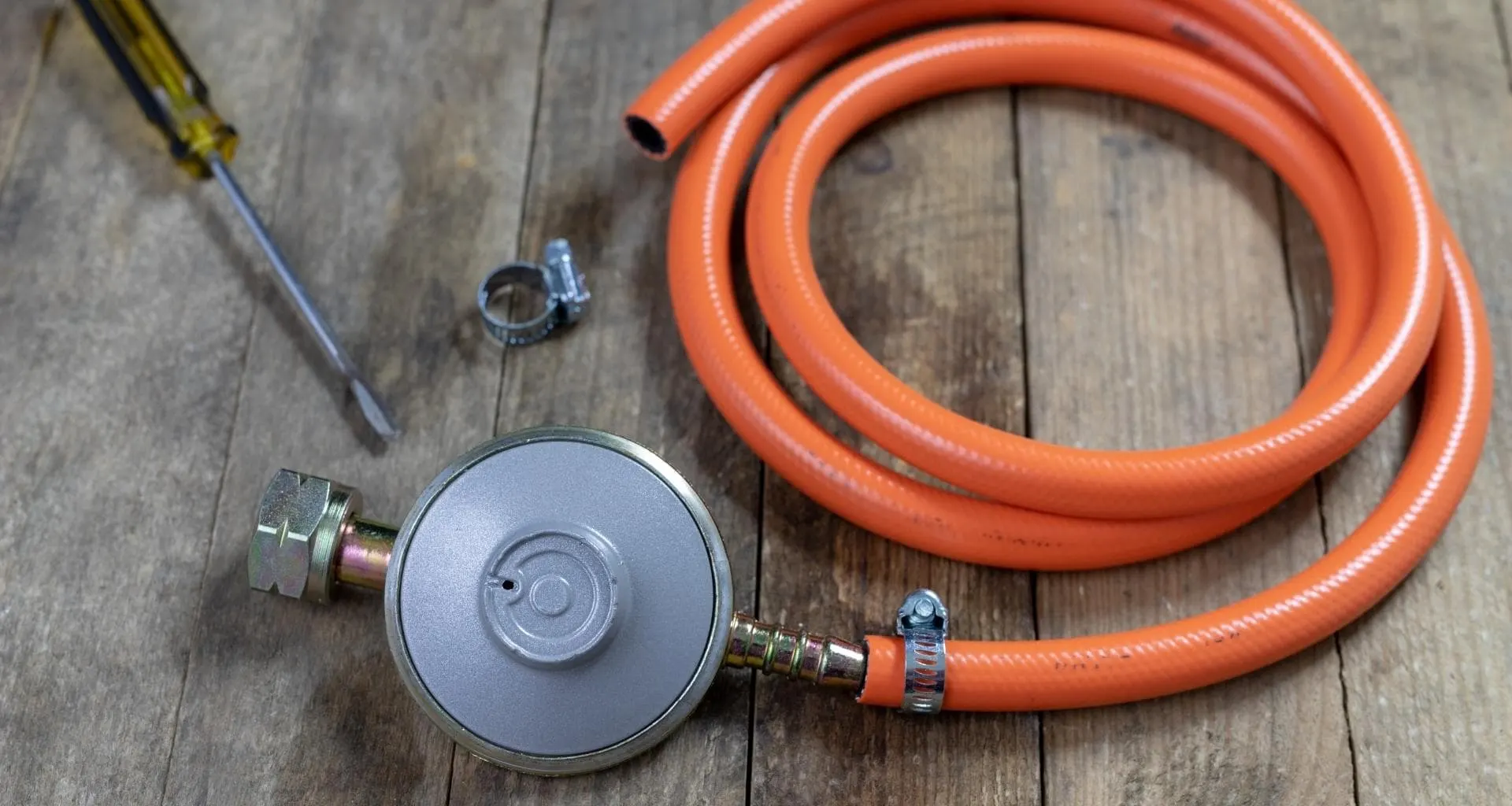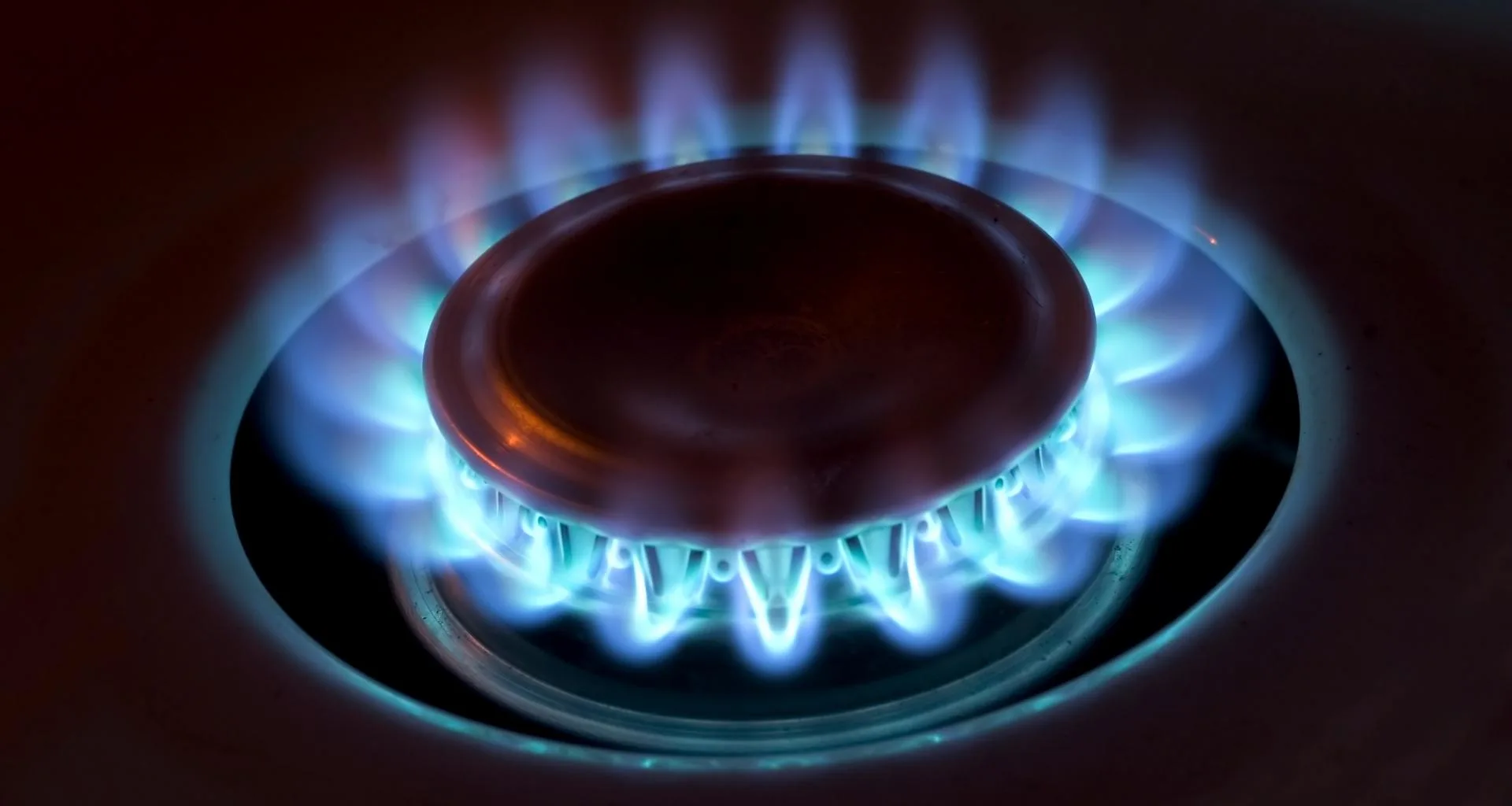The usefulness of propane in the RV setting is significant. Propane allows us to cook, heat the RV, and get hot water for showering and washing dishes and hands. We all keep a good eye on our propane monitor to make sure we have plenty of propane to do all of those things. But there’s a facet of the RV propane system that we rarely hear anyone talk about, and that’s the RV propane regulator.
A propane regulator exists for your safety. So, in today’s post, we’re talking about it. What is a propane regulator, what does it do, and does your rig even need one? The answers are pretty important, so let’s dig in.
- 1) What Is a Propane Regulator?
- 2) Do I Need a Propane Gas Regulator For My RV?
- 3) Are All Propane Regulators the Same?
- 4) What Do the First and Second Stages of a Two-Stage Propane Regulator Do?
- 5) How Often Does an RV Propane Regulator Need to Be Replaced?
- 6) How Do I Know If I Need to Replace My RV Propane Regulator?
- 7) What Type of Propane Regulator Do I Need If My RV Has One Propane Tank?
- 8) What Type of Propane Regulator Do I Need If My RV Has Two Propane Tanks?
- 9) Does a Propane Regulator Need a Cover?
- 10) Can I Use My RV’s Propane System Without a Propane Regulator?
What Is a Propane Regulator?
A propane regulator controls the release of propane vapor from the tank. So, what’s the big deal? Well, the pressure within a tank of propane is anywhere between 100 and 250 psi. If that pressure were to be released without being regulated/controlled by a propane regulator, you’d quickly find yourself in a terribly dangerous situation with a huge, uncontrolled flame.
A propane regulator allows the propane to be released in a slow, steady, and controlled manner… supplying a constant and consistent supply of it, at a carefully-controlled pressure, to all of your RV’s onboard appliances.
Do I Need a Propane Gas Regulator For My RV?
Yes. If you have a propane tank, then a good propane regulator is absolutely critical, particularly if you’re interested in avoiding an explosion.
Also, your propane tank will not be able to send fuel to your RV appliances if your propane tank regulator is not working properly. In essence, it’s the most important part of your propane system.
Not only do you need a propane regulator for your RV, but it’s not a bad idea to keep a spare on hand. They’re relatively inexpensive at around $25 or so, and they’re not difficult to install.

It’s absolutely critical that you have a working RV propane regulator. And it’s not a bad idea to keep a spare on hand. Fortunately, they’re relatively inexpensive and you can (CAREFULLY) replace them yourself.
Are All Propane Regulators the Same?
No. Not all propane gas regulators are created equal. While they do serve the same purpose, different propane setups require different types of propane regulators.
Your RV most likely requires a two-stage propane regulator. It sits between the tank and the rest of the propane system, and takes the fuel coming from the tank at very high pressure (psi), and adjusts it to a safe and manageable flow.
What Do the First and Second Stages of a Two-Stage Propane Regulator Do?
The first stage of a two-stage propane regulator lowers the pressure to a safe and manageable 10-15 psi (from an UNmanageable and UNsafe 100-250 psi).
The second stage brings that 10-15 psi down to roughly 11-inch water column (another measure of pressure… 11-inch water column is approximately 0.4 psi), which is just right for your RV’s appliances.
How Often Does an RV Propane Regulator Need to Be Replaced?
Propane gas regulators should be replaced every 10-15 years simply because internal components can wear down over time, and it’s best to replace the regulator before that happens.
Obviously, if you’re experiencing some trouble with your RV’s propane regulator, you’ll need to replace it immediately.
How Do I Know If I Need to Replace My RV Propane Regulator?
There are a few signs that can emerge when a propane regulator is ready to be replaced.
If your regulator is leaking, you’ll smell gas or possibly hear a hissing sound. If this occurs, you can try hand-tightening the fixture. If that doesn’t solve the problem, then you need to replace your propane regulator.
There are a few other signs that can signal that your propane regulator is bad. If you notice yellow or orange flames on your stove (instead of a normal blue-ish color), if you hear a popping sound or roaring sound when you turn your stove’s burner on or off, or if you find soot accumulating on the burners, these are all indications that your propane regulator is bad.

If your propane stove has an orange or yellow flame rather than a healthy blue flame as shown here, your propane regulator may need to be replaced.
What Type of Propane Regulator Do I Need If My RV Has One Propane Tank?
If your rig has one propane tank, you’ll need a two-stage propane regulator with a single hose like the one shown below. This one has a solid brass fitting and a durable hose, all of which are important to secure a nice, tight connection between the tank and your system.
- 🏕️Widely Used: Althouth this propane hose with adapter is designed for blackstone griddle 17'' and 22'', when you take off the propane elbow...
- 🏕️Save Your Money: Using this propane adapter hose, you don't need to change the gas tank frequently, you can connect your Blackstone 17'' or...
What Type of Propane Regulator Do I Need If My RV Has Two Propane Tanks?
Some RVs have two propane tanks. With two tanks, you’ll want to get a changeover regulator that attaches to both tanks. In this case, you’ll turn on both propane tanks, then switch the regulator lever to one of the two tanks. When the first tank is empty, you’ll switch the lever to the second tank.
You can also get a regulator that has an automatic changeover feature, which means that when one tank is empty, the switch to the second tank is automatic.
With this feature, you never have to worry about the changeover. The only downside is that you don’t know when your first tank empties, so you’re not alerted to the fact that you’ve only got one tank of propane left. So the feature could find you running out of propane.
This is a two-stage propane regulator with an automatic changeover feature:
- Allows removal of the empty cylinder for refill without interrupting propane supply; includes 2 of the 12-inch pigtails to connect the regulator to...
- For RVs with dual propane tanks; it automatically switches from primary to reserve tank when the primary tank is empty
Does a Propane Regulator Need a Cover?
Yes! An RV’s two-stage propane regulator needs to be kept covered. If you buy a new RV, it will have a propane regulator cover. If you have an RV without a cover or with a damaged cover, there are plastic covers available, they’re very inexpensive, and you do need one.
Can I Use My RV’s Propane System Without a Propane Regulator?
No. You should never use your RV’s propane system without a propane regulator. Without a regulator to control the excessive pressure, you would be in great danger (as would others around you) if you were to use your RV’s propane system without a propane regulator.
Geek Out With Us Every Week
Join our newsletter to learn about all things RV-related. Every week we offer free tips, tricks, product reviews, and more to our online community of RVers. So, whether this is your first time on the road or you’re a seasoned expert, we’d love for you to geek out with us!




Gene Hulsey
Monday 7th of March 2022
Does a single stage regulator mounted vertically by RV propane tank need a cover? If so, I am unable to find one. Any advice?
Gay Camping Enthusiast
Wednesday 19th of January 2022
Sounds like a good thing to have if you're going to be operating an RV of any kind.
Stan Wieg
Tuesday 18th of January 2022
Most new propane tanks have an internal excess flow valve that shuts off the gas flow if the amount of flow is too high, as in the situation where a line had failed or been broken. Trying to use the tank without a regulator or a very slow opening might cause it to choke off the gas flow. Also, many coaches (like our 2002 Country Coach) have a propane sensor inside the coach that is linked to a shut-off valve at the tank. If it senses gas, or what it "thinks" is gas, it will shut of the system. The sensor is usually down at floor level. Good luck!
Darin
Tuesday 18th of January 2022
I run my RV off a 120-gallon propane tank that's 1/2 full. In the mornings I'm having trouble getting the furnace to turn on. It sometimes waits 20 minutes before finally firing up. Also, when I try to take a shower in the mornings the water isn't hot. Could this be a faulty regulator that's not allowing propane to flow properly?